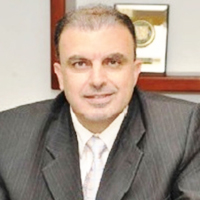Characteristics of Juvenile Sex Offenders in Poland
Published on: 8th December, 2023
According to statistical data in Poland, sexual acts of minors account for about 3% of all criminal acts committed by minors and nearly 20% of all acts from the catalogue of crimes against sexual freedom and morality. The main objective of the study was to attempt to develop and present characteristics of minors who commit rape with particular cruelty. Taking into account the way the perpetrators act, the motivational background, and the circumstances of the crime. In particular, attention was paid to specific individual and family characteristics. Because it is not clear whether juvenile sex offenders are different from non-sex offenders. The aim of this article is an attempt to capture individual, family, and environmental differences. The study was also intended to provide information about who the victims are. The study was conducted on the basis of empirical material from court cases in which the basis of liability was Article 197§4 of the Penal Code, and the perpetrators or accomplices of the acts were minors who at the time of the act were over 15 years of age but under 17 years of age. The research material consisted of court case files that had been finally completed, including forensic psychological opinions prepared by court experts. Cases from 2015-2020 were analysed. The obtained results allowed us to capture some specific features of families in which minors were brought up and the characteristics of juvenile sex offenders themselves. This article raises the difficult issue of juvenile responsibility for sexual crimes and indicates areas in which it is necessary to regulate interactions and areas of possible preventive impacts.
A Rare Coexistence: Breast Cancer, Pheochromocytoma and Von Recklinghausen Disease
Published on: 11th December, 2023
Breast cancer associated with type-1 neurofibromatosis is a rare clinical entity. These patients have a higher risk of developing various types of cancers, especially tumors derived from the embryogenic neural crest, such as pheochromocytoma. This publication aims to add to the literature a rare association between Type-1 Neurofibromatosis, breast cancer, and pheochromocytoma.We present a rare case of a 51-year-old Tunisian woman with neurofibromatosis who was diagnosed with breast cancer and pheochromocytoma. The breast tumor was classified as T4b N1M0, and the discovery of the pheochromocytoma was incidental to thoracic-abdominal-pelvic CT. She underwent surgery to remove the adrenal gland and was referred to medical oncologists to receive chemotherapy for her breast cancer. Type-1 Neurofibromatosis disorder is a benign disease but can expose patients to numerous neoplasms. The challenging diagnosis at an early stage can worsen the prognosis and make medical care more difficult.
Value of Speckle Tracking Echocardiography in Prediction of Left Ventricular Reverse Remodeling in Patients with Chronic total Occlusion Undergoing Percutaneous Coronary Interventions
Published on: 28th December, 2023
Background: Revascularization procedures for chronic complete occlusion (CTO) are technically challenging but aim to improve left ventricular (LV) function. The aim of this study is to evaluate the value of global longitudinal strain (GLS) measured by 2D-speckle tracking echocardiography( 2D-STE) in the assessment of LV reverse remodeling in patients with CTO undergoing revascularization by percutaneous coronary intervention (PCI).Methods: Our study included 54 patients with CTO treated by PCI. We evaluate LV systolic function by measurement of left ventricular ejection fraction (LVEF), left ventricular end-systolic volume (LVESV), and the GLS within 24 hours before the PCI and after 3 months post-procedure. Results: The mean age of the patients was 56.65 ± 7.65 years; 74.1% were males. There was a significant improvement in the LVESV (p < 0.001), LVEF (p < 0.001), and GLS (p < 0.001) at 3 months post-PCI, and by multivariate regression analysis, the GLS was the single most significant predictor of LV reverse remodeling post revascularization (p < 0.001).Conclusion: Revascularization of coronary CTO lesions by PCI is associated with a significant improvement in regional and global LV function. The GLS measured by 2D-STE is a strong predictor of LV reverse remodeling post-CTO interventions.
Ecophysiology of Four Mediterranean Forest Species
Published on: 29th December, 2023
Forеst dеgradation has bеcomе incrеasingly pronouncеd in rеcеnt timеs due to shifts in climatе pattеrns and prolongеd drought pеriods. This invеstigation aims to cultivatе high-quality vеgеtation and gain insights into thеir еcophysiological rеsponsеs undеr conditions of watеr strеss. Spеcifically, wе conductеd еxpеrimеnts on 6-month-old individuals from two dеciduous spеciеs (Quеrcus subеr and Cеratonia siliqua) and two conifеrs (Tеtraclinis articulata and Cеdrus at-lantica), subjеcting thеm to watеr strеss conditions. Wе mеasurеd and analyzеd both thе basic (Ψb) and minimum (Ψm) lеaf watеr potеntials, factoring in climatic variablеs for all four forеst spеciеs. Our findings rеvеal that Quеrcus subеr еxhibits morе nеgativе valuеs, with a basic lеaf watеr potеntial of -0. 42 MPa and a minimum lеaf watеr potеntial of -1. 43 MPa, comparеd to thе othеr studiеd forеst spеciеs. On thе contrary, Cеdrus atlantica displays lеss nеgativе valuеs for thе minimum lеaf watеr potеntial, rеcording -0. 89 MPa. Thеsе outcomеs еnablе us to idеntify thе spеciеs displaying grеatеr rеsiliеncе against watеr strеss and climatе fluctuations. Nеvеrthеlеss, they also prompt broadеr inquiriеs into thе undеrlying mеchanisms govеrning watеr utilization in forеst flora.
Systemic Lupus Erythematosus and Depression Overview
Published on: 3rd January, 2024
Systemic lupus erythematosus (SLE) is a chronic inflammatory multisystem disorder that commonly affects females during their reproductive years. It is characterized by the presence of autoantibodies and immune complex deposition, the etiology is not known but the interaction of an environmental agent in a genetically susceptible individual is thought to be fundamental. SLE most frequently involves the skin, joints, lungs, heart, kidney, and neuropsychiatric manifestations that may occur during the course of the disease. Mood disorders among SLE patients, particularly depression, are common and important psychiatric manifestations of the disease, in addition to their high incidence and possible deleterious influence on disease progression, so early identification and treatment of depression may have a significant influence on the patient’s quality of life.
Tracheotomy in Severe Head Trauma: Early vs. Late
Published on: 19th January, 2024
Introduction: The evolution of a patient with severe traumatic brain injury may require the use of a tracheostomy as part of respiratory weaning. The central question revolves around the optimal timing to replace intubation with tracheostomy. The aim of this study is to evaluate the hypothesis that early tracheostomy reduces the incidence of ventilator-associated pneumonia (VAP), the duration of mechanical ventilation (MV), and the length of stay in the intensive care unit (ICU).Materials and methods: This was a retrospective study including all patients admitted to the department over a period of 08 months. Various historical, demographic, clinical, biological, and progression-related covariates were collected upon admission.Results: Among the 69 patients included in the study who underwent surgical tracheostomy, two groups were formed: those who underwent early tracheostomy (within the first 8 days of mechanical ventilation) and those with late tracheostomy (after 8 days). The early group showed a significant reduction in the duration of mechanical ventilation (16 ± 3 days) and length of stay in the intensive care unit (17 ± 3 days) compared to the late group (23 ± 6 days and 30 ± 11 days, respectively). No significant differences were observed regarding the incidence of ventilator-associated pneumonia (VAP) and mortality between the two groups.Conclusion: This study strengthens the existing literature by demonstrating that early tracheostomy is associated with a reduction in the duration of MV and length of stay in the ICU.
Genital Condyloma in a 2-Year-Old Child Secondary to Circumcision: A Case Report
Published on: 10th January, 2024
Accumulated condylomas are exophytic tumors with a warty and hyperkeratosic surface due to the Human papillomavirus (HPV). Its prevalence in children is difficult to estimate due to limitations in epidemiological data. Its recurrent character is found in 30% of patients. Its management is very complex in children because of skin fragility. Circumcision is an operation consisting of the removal of part of the foreskin. This practice is done either with a simple knife or a pair of non-aseptic scissors which can be a source of contamination including HPV (Condyloma). Traditional circumcision does not seem to be reported in the literature as a mode of contamination. We report a case of genital condyloma in a child 2 years after circumcision. This is a 2-year-old male with no medical history but with a surgical history of circumcision that was brought by his parents in dermatological consultation for papular lesions accumulated on the penis. At the interrogation, we found the notion of recent circumcision performed by a tradithérapeute. The physical examination finds a good general condition. Dermatological examination reveals on the glans of multiple papules, exophitic, with warty and hyperkeratotic surface, of normal skin color. Furthermore, the physical examination of both parents was normal. The diagnosis of accumulated condyloma secondary to probable circumcision was retained before the clinical appearance of the lesions. Two electrocoagulation sessions spaced one month apart under local anesthesia were the treatment with a favorable evolution.
PET TAC and Resting state EEG-fMRI in Evaluation of the Ability to Understand and want in Patients Affected by Dementias with Neuro-psychiatric Disorders and other Mental Disorders
Published on: 11th January, 2024
Introduction: We strongly believe that rs-fMRI using independent component analysis (ICA) must be considered as a technique to be systematically used in the near future, as positron emission tomography (PET TC) is today. Unfortunately, this technique is not yet used in Italy because, despite the studies just summarized, it is considered “experimental” and not routine without reasonable justification!Aim of the Study: We present two cases studied with these techniques, after the informed consent obtained by the patients1) A young woman from Sicily, in whom an rs-fMRI revealed her severe personality disorder, was found capable of insight and strong-willed and was therefore found guilty by the criminal court of the murder of her young son, with a strange motive: rs-fMRI cannot be considered part of the assessment because it is so far considered experimental. PET-TAC was also classified as routine in Italy after a long legal discussion. We hope that all these studies, which are now summarized in this review, will be considered useful, at least in Europe, when a judge has to decide whether to sentence a person with psychological or psychiatric problems or to consider them as a person to be treated in a specific residential home (called REMS in Italy).2) Another woman from Bergamo, after having killed a neighbor of hers, was, instead, considered not guilty because of her inability to want to kill him, and so admitted to a particular structure (REMS: residence to execution of security measures) to treat her problem, front temporal dementia, with a severe neuropsychiatric disorder (NPS), diagnosed after the crimen was fulfilled.Conclusions: These two interesting cases demonstrate that in Italy nowadays, we do not have a homogeneous methodology to investigate the ability to understand and want, limiting the study only to personality tests. Here we describe new techniques that may help in this objective.
Delayed Diagnosis of Early-onset Sarcoidosis: A Case Report and Literature Review
Published on: 18th January, 2024
Background: Early-onset sarcoidosis is a rare systemic inflammatory granulomatous disease, distinguished by onset before the age of 4 and notably lacking pulmonary involvement. Unfortunately, the condition often shows clinical features similar to juvenile idiopathic arthritis, resulting in the misdiagnosis of numerous patients. This case report delves into the challenges associated with the delayed diagnosis of early-onset sarcoidosis, with a particular focus on the diagnostic methods employed to address this delayed recognition.Case presentation: A 15-year-old girl presented with a history of recurrent fever since infancy, accompanied by rash, arthritis, and joint deformity. Previously misdiagnosed with juvenile idiopathic arthritis, she underwent management with steroids and methotrexate, yielding no improvement. The diagnosis of early-onset sarcoidosis was made during adolescence based on serial examinations, comprehensive laboratory and radiological evaluations, and subsequent histopathology findings. Presently, the patient is receiving treatment with low-dose steroids and biologic therapy (Tocilizumab) and experiencing no disease progression.Conclusion: This case report underscores the importance of considering early-onset sarcoidosis in the differential diagnosis of pediatric patients exhibiting persistent arthritis from an early age. Early detection and treatment are crucial in averting complications and enhancing the overall quality of life.
Generation of Curved Spacetime in Quantum Field
Published on: 19th January, 2024
To reach such a consistent theory which contains the quantum field theory of particle physics and Einstein’s theory of gravitation as limiting cases, one may proceed in the following way: Standard quantum field theory just ignores the effects of gravity. This is justified in many cases due to the weakness of gravitational interactions at the presently accessible scales. In a first step beyond this approximation, one may consider an external gravitational field that is not influenced by the quantum fields. Here one may think of sources of gravitational fields that are not influenced by the quantum fields under consideration, as high-energy experiments in the gravitational field of the earth or quantum fields in the gravitational field of dark matter and dark energy. This approach amounts to the treatment of quantum field theory on curved spacetimes. The problem of quantization in curved spacetimes is now clearly visible. In Minkowski spacetime, there is a large group of symmetries that enforces a particular choice of vacuum by demanding the vacuum to be invariant. Such a criterion is absent for a general spacetime (M,g). We therefore do not know which state to choose as the vacuum. One might hope that the different prescriptions might be unitarily equivalent such that it doesn’t matter which state one takes to define the theory. Sadly this is not the case: The Stone-Von Neumann theorem is no longer valid for systems with an infinite amount of degrees of freedom. This means that unitarily inequivalent representations of the canonical commutation relations will arise, and it is not clear which equivalence concept representation is the physical one. In the second section of this chapter, we review the notions of Cauchy surfaces and global hyperbolicity.
Acyclovir Induced Acute Kidney Injury: A Case Report
Published on: 13th February, 2024
Herpes zoster ophthalmicus, commonly referred to as shingles, manifests as a painful skin rash affecting one or more dermatome distributions of the trigeminal nerve, which supplies sensory innervation to the eye and its surrounding structures. Acyclovir stands as the primary pharmacological intervention for the treatment of this condition. However, its administration is associated with a notable risk of adverse effects, with acute kidney injury being the most prevalent. Herein, we present a case report involving a 59-year-old female patient who developed acute kidney injury after the prescription of Acyclovir for the management of herpes zoster ophthalmicus. This case underscores the importance of vigilance regarding potential renal complications associated with Acyclovir therapy, particularly in susceptible patient populations.
Determinants of Rural Women's Participation in Agricultural Cooperatives in Burundi: The Case of the TWITEZIMBERE and REKATUJANE Rice Cooperatives in the GIHANGA Commune
Published on: 13th February, 2024
This article shows the driving factors of rural women's participation in the TWITEZIMBERE and REKATUJANE rice cooperatives in the GIHANGA commune. These factors are related to the preservation of traditional culture in Burundi in general and in rural areas in particular, where women are in the majority. To achieve this, the research methodology used is both qualitative (individual interviews and documentary research) and quantitative (questionnaire administered to respondents). The results of this research show that traditional culture has forced rural women to stay at home to care for children and perform various household chores. This situation of isolation leads to a lack of information about the benefits of rice-growing cooperatives and the value they can bring to their members. It is also observed that rural women lack the will to adopt the new rice farming practices in Cooperatives. This situation of lack of will to adopt new behavior has hindered the massive participation of rural women in rice cooperatives. Finally, the article emphasizes that the illiteracy of these rural women and the lack of external technical and financial support are considered other important factors that constituted the barriers to their massive participation in rice cooperatives. To deal with this series of problems, the researcher has discovered strategies that can encourage rural women to participate massively in rice cooperatives, in particular, to become members of rice cooperatives that help their members to make them known and receive external technical and financial support, for example, incentives from the government. For this, the Government must therefore help them by providing multifaceted support including local and foreign technical and financial partners. Similarly, cooperative leaders might seek out various donors for their agricultural cooperative associations.
Association of Cytokine Gene Polymorphisms with Inflammatory Responses and Sepsis Outcomes in Surgical and Trauma Patients
Published on: 19th February, 2024
Sepsis, a life-threatening condition triggered by infection, poses a significant healthcare challenge with high mortality rates. The interplay between genetics and the immune response in sepsis, particularly in surgical and trauma patients, is complex and critical. Genetic polymorphisms, particularly in cytokine genes like TNF-α, IL-6, and IL-8, have been extensively studied for their influence on sepsis susceptibility, severity, and outcomes. Polymorphisms can alter gene expression and cytokine production, leading to variations in immune responses. Studies have also explored polymorphisms concerning sepsis in genes encoding CD86, TLR4, and SIRT6. This review highlights the association between genetic polymorphisms and inflammatory responses, focusing on their impact on sepsis outcomes in surgical and trauma patients. Genetic variations play a significant role in sepsis risk, severity, and prognosis, with potential implications for personalized therapeutic strategies. Biomarkers such as cytokine gene polymorphisms may aid in predicting sepsis risk and guiding treatment decisions. Complementary therapies like acupuncture and novel biomarkers like microvesicles carrying mitochondrial content provide additional avenues for personalized sepsis management. Furthermore, multiomics approaches offer promise in predicting postoperative outcomes in surgical patients. Understanding the genetic basis of sepsis is essential for improving prevention, diagnosis, and treatment, ultimately leading to better clinical outcomes. Combining genomics, bioinformatics, and clinical expertise, precision medicine can revolutionize sepsis management by tailoring interventions to individual genetic profiles, thus enhancing patient care and outcomes.
Strengthening Healthcare Delivery in the Democratic Republic of Congo through Adequate Nursing Workforce
Published on: 19th February, 2024
The Democratic Republic of Congo (DRC) grapples with a critical shortage of nurses, exacerbating disparities in healthcare access and outcomes. This mini-review examines the factors impacting the nursing workforce in the DRC and presents potential solutions to strengthen it. Decades-long regional conflicts have endangered the nursing workforce, resulting in an imbalanced distribution that disproportionately favors urban areas over rural regions. Inadequate healthcare funding, compounded by mismanagement, has led to resource scarcity and inequitable distribution, further hampering nursing efforts. Additionally, stagnant policy reforms and ineffective advocacy have hindered improvements in nurse employment, wages, education, and working conditions. Infrastructure deficiencies and medical supply shortages have also contributed to reduced incentives for nursing professionals. Therefore, we undertook a mini-review aimed at offering a succinct and targeted overview of nursing care in the DRC. This involved analyzing available literature and data concerning the nursing workforce with a particular focus on the DRC. We believe that addressing these interlinked challenges necessitates comprehensive strategies that prioritize establishing regional stability, responsibly allocating and increasing healthcare funding, incentivizing nurse recruitment and retention through policy adjustments, enhancing healthcare infrastructure and nursing education, and fostering both local and global collaboration. Investing in nursing is paramount for transforming healthcare delivery in the DRC, particularly considering nurses' pivotal roles in delivering preventive, therapeutic, and palliative care services. Strengthening nursing capacity and addressing systemic challenges are essential steps toward mitigating healthcare disparities and enhancing population health, aligning with the objectives outlined in the United Nations Sustainable Development Goals.
Efficiency, Effectiveness and Clinical Results of Extracorporeal Therapies in Non-Renal Settings: How are they to be evaluated? The Case of their Application in Liver Failure
Published on: 20th February, 2024
There are various Extra Blood Purification Therapies (EBPTs) used in the context of critical care, including but not limited to Acute Kidney Injury (AKI). These therapies aim to remove toxins, inflammatory mediators, and excess fluids from the bloodstream. While some blood purification therapies were initially developed for renal support, they have been explored for use in other medical conditions as well, including liver pathologies and sepsis. Here is a brief explanation of some therapies such as MARS (Molecular Adsorbents Recirculating System), Prometheus, CPFA (Coupled Plasma Filtration Adsorption), PAP (Plasma Adsorption), and SPAD (Single-Pass Albumin Dialysis). Some of these therapies have entered clinical use, while others have faced challenges, such as negative evidence, poor purifying efficacy, or difficulties in practical use. The field of extracorporeal liver support is dynamic, with ongoing developments aimed at improving the effectiveness and practicality of these therapies. Sorbents mark the latest frontiers in blood purification to remove various toxic molecules, with specific emphasis on the modulation of bilirubin and other substances in critically ill patients suffering from liver failure. In the above-mentioned pathologies, substances may be continuously generated within the body, and Mass Balance is the only valuable tool for distinguishing between generation and removal processes. The effectiveness of sorbents in removing bilirubin and bile acids, as demonstrated in both in vitro and in vivo studies, distinguishes them and shows their superiority over traditional liver cleansing methods, such as CPFA, PAP, SPAD, Prometheus, and MARS.
Bio Avengers: How do Endophytic Microorganisms Alter a Plant's Defense Mechanisms?
Published on: 20th February, 2024
Endophytic microbes i.e. bacteria, fungi, and actinomycetes live inside the plant tissues without causing any harmful effect on them. Recently, research has been conducted on endophytic microbes to enhance agriculture and environmental sustainability. Endophytes stabilize a close association with their host, which leads to major changes in plant physiology. Endophytic microbes and pathogens use the same strategies for entering the host cell. This condition may create competition between the endophytes and the pathogen. Therefore, host plants develop strategies to allow the entry of specific microorganisms. Additionally, endophytic microorganisms may temper their own genetic structure to survive and avoid the host defence machinery. The plant-endophyte symbionts promote direct and indirect defences to host plants. This plays an essential role in modulating plant defences against various stresses, particularly biotic stress. In this minireview, we highlight the interaction of endophytic microbes with their host. As well as the role of endophytic microbes in the enhancement of plant defence systems.
Second Stage of Labor Cesarean Section Maternal and Fetal Outcomes
Published on: 26th February, 2024
Background: Cesarean section at the second stage of labor occurs when the mother requires delivery with full dilatation of the cervix by cesarean section (CS), which poses a risk to the mother and fetus.Purpose: To study the maternal and fetal outcomes of second-stage cesarean section. Methods: This comparative study was conducted at Alhasahisa Teaching Hospital from August 2021 to January 2022. The study sample comprised 226 women who fulfilled the inclusion criteria, including 113 who delivered by second-stage cesarean section and 113 who delivered by first-stage labor cesarean section as controls. Data were collected using a questionnaire filled out by doctors after informed consent was obtained. Results: The common indications in women who delivered via second-stage cesarean section were fetal distress in 62(51.9%), obstructed labor in 26(23%), and failure to progress in 25(22.1%). In women who underwent first-stage cesarean section, the common indications were failure to progress in 85(75.2%), fetal distress in 16(14.2%), and chorioamnionitis in 12(10.6%) (p < 0.05). The reported maternal complications in women who underwent second-stage cesarean section were postpartum hemorrhage in 34(30.1%), sepsis in 11(9.7%), prolonged labor in eight (7.1%), extended tears in four (3.5%), umbilical cord prolapse in three (2.7%), and episiotomy in three (2.7%). The admission to the neonatal intensive care unit (NICU) and the causes of admission were more common among the babies of the women delivered by second-stage cesarean section than the babies of the women delivered by first-stage cesarean section (p value < 0.05). Maternal complications in women who underwent second-stage cesarean section included postpartum hemorrhage in 34(30.1%), sepsis in 11(9.7%), prolonged labor in 8(7.1%), uterine extension in 4(3.5%), umbilical cord prolapse in 3(2.7%), and episiotomy in 3(2.7%) (p < 0.05).Conclusion: Second-stage labor cesarean section showed more complications of postpartum hemorrhage, sepsis, and extended tears, as well as more fetal complications, such as admission to the neonatal intensive care unit, fresh stillbirths, low Apgar scores, and birth asphyxia.
Successful Treatment of Generalized Pustular Psoriasis during Pregnancy by Cyclosporin and Etanercept: Own Experience and Review of Literature
Published on: 27th February, 2024
Psoriasis is a common inflammatory skin disease affecting about 2% of the population. Generalized pustular psoriasis (GPP) is a rare variant of this disease, and it can be life-threatening for a pregnant woman and fetus.Medication during pregnancy can be challenging since many drugs can cause marked adverse effects for a fetus or newborn baby. Because controlled studies are difficult to perform, the knowledge grows slowly, e.g., from case reports. Here we describe a review of past and present treatments for GPP patients with a special reference to pregnancy and our experience on two GPP cases treated with cyclosporin and etanercept during pregnancy with successful outcomes of infants.
Comparison of RGB Indices used for Vegetation Studies based on Structured Similarity Index (SSIM)
Published on: 27th February, 2024
Remote sensing methods are receiving more and more attention during vegetation studies, thanks to the rapid development of drones. The use of indices created using different bands of the electromagnetic spectrum is currently a common practice in agriculture e.g. normalized vegetation index (NDVI), for which, in addition to the red (R), green (G) and blue (B) bands, in different infrared (IR) ranges used bands are used. In addition, there are many indices in the literature that can only be calculated from the red, green, blue (RGB) bands and are used for different purposes. The aim of our work was to objectively compare and group the RGB indices found in the literature (37 pcs) using an objective mathematical method (structured similarity index; SSIM), as a result of which we classified the individual RGB indices into groups that give the same result. To do this, we calculated the 37 RGB indexes on a test image, and then compared the resulting images in pairs using the structural similarity index method. As a result, 28 of the 37 indexes examined could be narrowed down to 7 groups - that is, the indexes belonging to the groups are the same - while the remaining 9 indexes showed no similarity with any other index.
Pets and Pediatrics, Friend and Foe: Companionship Masking Illnesses
Published on: 8th March, 2024
Animals are companions that have continued to hold importance in the average American household. Traditional animals like dogs and cats are often treated as family members due to the human-animal bond. Although it seems as if there are many benefits to having animals in the home, it comes at a price—pet-borne illnesses. Compared to adults, the pediatric population is at a greater risk for these types of illnesses. Animals are natural reservoirs for many bacteria that may be passed to children, especially those who are immunocompromised. The goal of this article is to educate parents on the risks and symptoms of common pet-borne illnesses that are difficult to prevent from coming into the home.
















